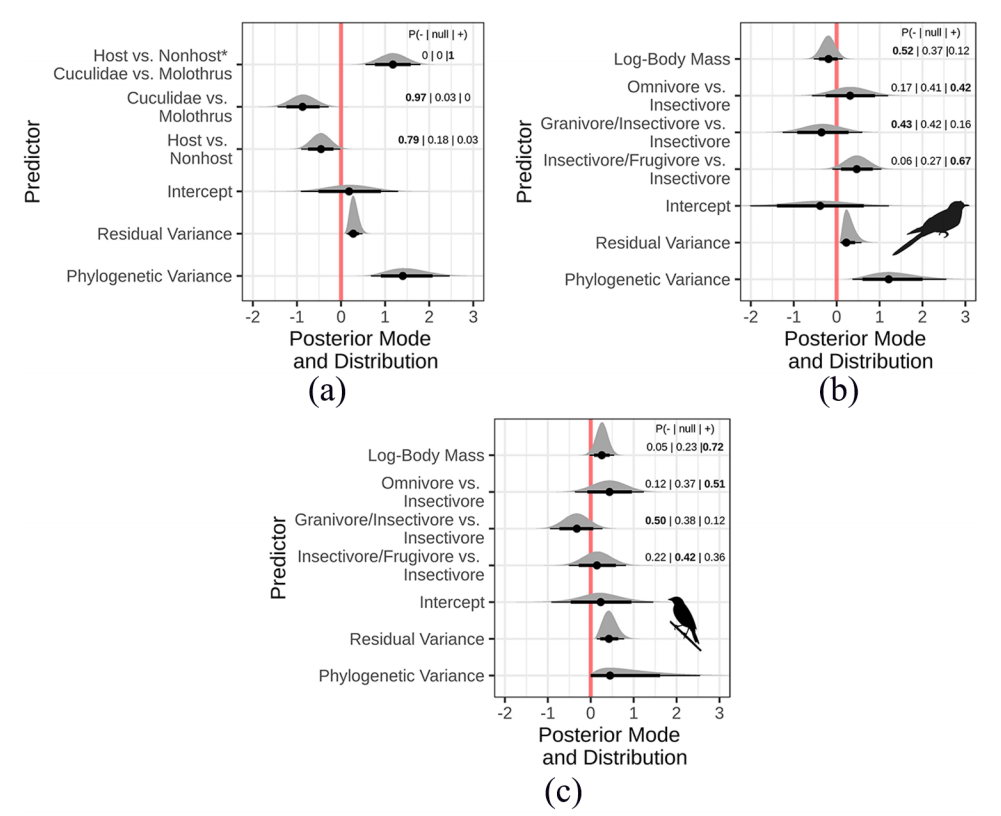 Posterior modes of egg rejection rates by A hosts and nonhosts of B cuckoo and C cowbird brood parasites as predicted by diet types.
Posterior modes of egg rejection rates by A hosts and nonhosts of B cuckoo and C cowbird brood parasites as predicted by diet types.
Abstract
Egg rejection is a common and effective defense against avian brood parasitism in which the host either marginalizes or removes the parasitic egg or deserts the parasitized clutch. The ability to recognize and reject a parasitic egg depends on bill morphology, sensory systems, and cognition, all of which are also shaped by other selective processes, such as foraging. This begs the question whether specific phenotypes associated with different foraging strategies and diets may constrain or facilitate egg recognition and rejection. Here, we propose a novel hypothesis that host species phenotypes related to foraging ecology and diet may impose morphological and visual sensory constraints on the evolution of egg recognition and rejection. We conducted a comparative analysis of the adult diets and egg rejection rates of 165 current host and non-host species. We found that species have significantly higher egg rejection rates when they (i) consume an omnivorous or animal and fruit dominated diet rather than seeds and grains, (ii) forage arboreally rather than aerially or on the ground, or (iii) possess relatively larger body sizes. Though correlational in nature, as predicted, these results suggest phenotypes related to specific diets and foraging ecologies may differentially constrain or facilitate evolution of host egg rejection defenses against avian brood parasitism.